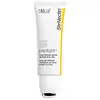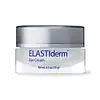What's inside
What's inside
 Key Ingredients
Key Ingredients

 Benefits
Benefits

 Concerns
Concerns

 Ingredients Side-by-side
Ingredients Side-by-side

Water
Skin ConditioningGlycerin
HumectantC12-15 Alkyl Benzoate
AntimicrobialPentaerythrityl Tetraethylhexanoate
EmollientDimethicone
EmollientButylene Glycol
HumectantPropanediol
SolventPEG-40 Stearate
EmulsifyingMyristyl Nicotinate
Skin ConditioningSaccharide Isomerate
HumectantHydrogenated Ethylhexyl Olivate
EmollientBis-Stearyl Dimethicone
EmollientSorbitan Stearate
EmulsifyingAcetyl Dipeptide-1 Cetyl Ester
Skin ConditioningPseudoalteromonas Ferment Extract
HumectantGleditsia Triacanthos Seed Extract
Helianthus Annuus Extract
EmollientThymus Vulgaris Leaf Extract
Skin ProtectingOryza Sativa Bran Extract
Skin ConditioningMucor Miehei Extract
AstringentRosmarinus Officinalis Leaf Extract
AntimicrobialBacillus/Sea Salt Ferment Filtrate
Skin ConditioningTetrahydrodiferuloylmethane
AntioxidantGlucosamine Hcl
Hydrogenated Olive Oil Unsaponifiables
EmollientUrea
BufferingLecithin
EmollientHydroxyethylcellulose
Emulsion StabilisingPolysorbate 80
EmulsifyingStearyl Alcohol
EmollientPolysilicone-11
Cetyl Alcohol
EmollientArachidyl Alcohol
EmollientSorbitan Oleate
EmulsifyingGlyceryl Caprylate
EmollientBenzyl Alcohol
PerfumingIsohexadecane
EmollientSorbitan Laurate
EmulsifyingTocopherol
AntioxidantDisodium EDTA
1,2-Hexanediol
Skin ConditioningCaprylyl Glycol
EmollientPoloxamer 338
EmulsifyingEthylene/Acrylic Acid Copolymer
Emulsion StabilisingAcrylamide/Sodium Acryloyldimethyltaurate Copolymer
Emulsion StabilisingAmmonium Acryloyldimethyltaurate/Vp Copolymer
Caprylhydroxamic Acid
Parfum
MaskingXanthan Gum
EmulsifyingSilica
AbrasiveAminomethyl Propanol
BufferingCitric Acid
BufferingSodium Citrate
BufferingSodium Benzoate
MaskingPotassium Sorbate
PreservativeLimonene
PerfumingWater, Glycerin, C12-15 Alkyl Benzoate, Pentaerythrityl Tetraethylhexanoate, Dimethicone, Butylene Glycol, Propanediol, PEG-40 Stearate, Myristyl Nicotinate, Saccharide Isomerate, Hydrogenated Ethylhexyl Olivate, Bis-Stearyl Dimethicone, Sorbitan Stearate, Acetyl Dipeptide-1 Cetyl Ester, Pseudoalteromonas Ferment Extract, Gleditsia Triacanthos Seed Extract, Helianthus Annuus Extract, Thymus Vulgaris Leaf Extract, Oryza Sativa Bran Extract, Mucor Miehei Extract, Rosmarinus Officinalis Leaf Extract, Bacillus/Sea Salt Ferment Filtrate, Tetrahydrodiferuloylmethane, Glucosamine Hcl, Hydrogenated Olive Oil Unsaponifiables, Urea, Lecithin, Hydroxyethylcellulose, Polysorbate 80, Stearyl Alcohol, Polysilicone-11, Cetyl Alcohol, Arachidyl Alcohol, Sorbitan Oleate, Glyceryl Caprylate, Benzyl Alcohol, Isohexadecane, Sorbitan Laurate, Tocopherol, Disodium EDTA, 1,2-Hexanediol, Caprylyl Glycol, Poloxamer 338, Ethylene/Acrylic Acid Copolymer, Acrylamide/Sodium Acryloyldimethyltaurate Copolymer, Ammonium Acryloyldimethyltaurate/Vp Copolymer, Caprylhydroxamic Acid, Parfum, Xanthan Gum, Silica, Aminomethyl Propanol, Citric Acid, Sodium Citrate, Sodium Benzoate, Potassium Sorbate, Limonene
Water
Skin ConditioningC12-15 Alkyl Benzoate
AntimicrobialEthylhexyl Palmitate
EmollientC13-15 Alkane
SolventCyclopentasiloxane
EmollientGlycerin
HumectantGlyceryl Stearate
EmollientPEG-100 Stearate
Propylene Glycol
HumectantStearyl Alcohol
EmollientDipropylene Glycol Dibenzoate
EmollientDimethicone
EmollientPPG-15 Stearyl Ether Benzoate
EmollientPolyacrylamide
Cetyl Alcohol
EmollientCetyl Dimethicone
EmollientC13-14 Isoparaffin
EmollientXanthan Gum
EmulsifyingMagnesium Aluminum Silicate
AbsorbentLaureth-7
EmulsifyingTocopheryl Acetate
AntioxidantGlycyrrhiza Glabra Root Extract
BleachingAlgae Extract
EmollientVaccinium Angustifolium Fruit Extract
Skin ProtectingPhenoxyethanol
PreservativeMethylparaben
PreservativeEthylparaben
PreservativeButylparaben
MaskingPropylparaben
PreservativeIsobutylparaben
AntimicrobialHdi/Trimethylol Hexyllactone Crosspolymer
Sodium Hydroxide
BufferingMalonic Acid
BufferingMalachite
Skin ConditioningZinc Carbonate
Silica
AbrasiveTalc
AbrasiveAlumina
AbrasiveMica
Cosmetic ColorantCI 77891
Cosmetic ColorantCI 77491
Cosmetic ColorantCI 42090
Cosmetic ColorantWater, C12-15 Alkyl Benzoate, Ethylhexyl Palmitate, C13-15 Alkane, Cyclopentasiloxane, Glycerin, Glyceryl Stearate, PEG-100 Stearate, Propylene Glycol, Stearyl Alcohol, Dipropylene Glycol Dibenzoate, Dimethicone, PPG-15 Stearyl Ether Benzoate, Polyacrylamide, Cetyl Alcohol, Cetyl Dimethicone, C13-14 Isoparaffin, Xanthan Gum, Magnesium Aluminum Silicate, Laureth-7, Tocopheryl Acetate, Glycyrrhiza Glabra Root Extract, Algae Extract, Vaccinium Angustifolium Fruit Extract, Phenoxyethanol, Methylparaben, Ethylparaben, Butylparaben, Propylparaben, Isobutylparaben, Hdi/Trimethylol Hexyllactone Crosspolymer, Sodium Hydroxide, Malonic Acid, Malachite, Zinc Carbonate, Silica, Talc, Alumina, Mica, CI 77891, CI 77491, CI 42090
Ingredients Explained
These ingredients are found in both products.
Ingredients higher up in an ingredient list are typically present in a larger amount.
C12-15 Alkyl Benzoate is made up of Benzoic Acid and long chain alcohols. It has a low molecular weight.
C12-15 Alkyl Benzoate is an emollient and texture enhancer. Due to its solubility, it is often used in sunscreens to help evenly distribute active ingredients.
As an emollient, C12-15 Alkyl Benzoate helps soften and hydrate your skin. Emollients create a film on your skin that traps moisture within.
This ingredient has been reported to cause eye irritation.
Learn more about C12-15 Alkyl BenzoateCetyl Alcohol is a fatty alcohol. Fatty Alcohols are most often used as an emollient or to thicken a product.
Its main roles are:
Though it has "alcohol" in the name, it is not related to denatured alcohol or ethyl alcohol.
The FDA allows products labeled "alcohol-free" to have fatty alcohols.
Learn more about Cetyl AlcoholDimethicone is a type of synthetic silicone created from natural materials such as quartz.
What it does:
Dimethicone comes in different viscosities:
Depending on the viscosity, dimethicone has different properties.
Ingredients lists don't always show which type is used, so we recommend reaching out to the brand if you have questions about the viscosity.
This ingredient is unlikely to cause irritation because it does not get absorbed into skin. However, people with silicone allergies should be careful about using this ingredient.
Note: Dimethicone may contribute to pilling. This is because it is not oil or water soluble, so pilling may occur when layered with products. When mixed with heavy oils in a formula, the outcome is also quite greasy.
Learn more about DimethiconeGlycerin is already naturally found in your skin. It helps moisturize and protect your skin.
A study from 2016 found glycerin to be more effective as a humectant than AHAs and hyaluronic acid.
As a humectant, it helps the skin stay hydrated by pulling moisture to your skin. The low molecular weight of glycerin allows it to pull moisture into the deeper layers of your skin.
Hydrated skin improves your skin barrier; Your skin barrier helps protect against irritants and bacteria.
Glycerin has also been found to have antimicrobial and antiviral properties. Due to these properties, glycerin is often used in wound and burn treatments.
In cosmetics, glycerin is usually derived from plants such as soybean or palm. However, it can also be sourced from animals, such as tallow or animal fat.
This ingredient is organic, colorless, odorless, and non-toxic.
Glycerin is the name for this ingredient in American English. British English uses Glycerol/Glycerine.
Learn more about GlycerinSilica, also known as silicon dioxide, is a naturally occurring mineral. It is used as a fine, spherical, and porous powder in cosmetics.
Though it has exfoliant properties, the function of silica varies depending on the product.
The unique structure of silica enhances the spreadability and adds smoothness, making it a great texture enhancer.
It is also used as an active carrier, emulsifier, and mattifier due to its ability to absorb excess oil.
In some products, tiny microneedles called spicules are made from silica or hydrolyzed sponge. When you rub them in, they lightly polish away dead skin layers and enhance the penetration of active ingredients.
Learn more about SilicaStearyl Alcohol is a type of fatty alcohol from stearic acid. It is a white, waxy compound used to emulsify ingredients.
Fatty Alcohols are most often used as an emollient or to thicken a product. Emollients help soothe and hydrate the skin by trapping moisture.
They are usually derived from natural fats and oils and therefore do not have the same drying or irritating effect as solvent alcohols. FDA allows products labeled "alcohol-free" to have fatty alcohols.
Learn more about Stearyl AlcoholWater. It's the most common cosmetic ingredient of all. You'll usually see it at the top of ingredient lists, meaning that it makes up the largest part of the product.
So why is it so popular? Water most often acts as a solvent - this means that it helps dissolve other ingredients into the formulation.
You'll also recognize water as that liquid we all need to stay alive. If you see this, drink a glass of water. Stay hydrated!
Learn more about WaterXanthan gum is used as a stabilizer and thickener within cosmetic products. It helps give products a sticky, thick feeling - preventing them from being too runny.
On the technical side of things, xanthan gum is a polysaccharide - a combination consisting of multiple sugar molecules bonded together.
Xanthan gum is a pretty common and great ingredient. It is a natural, non-toxic, non-irritating ingredient that is also commonly used in food products.
Learn more about Xanthan Gum